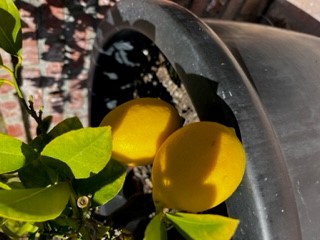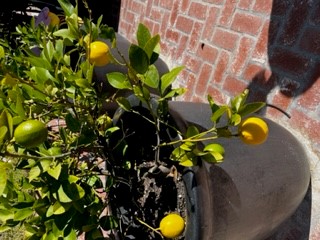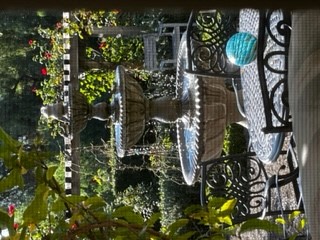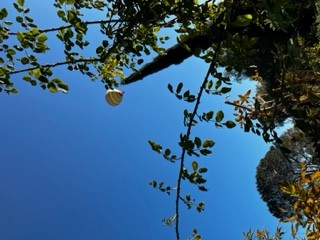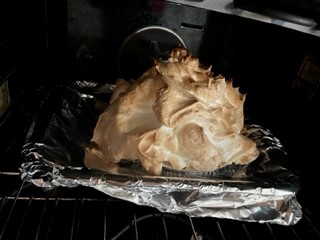By Francesca Filanc, for Let’s Talk Plants! January 2023.

Meyer Lemons For Your Home Garden
January is the month when many of us make New Year’s resolutions. It is the month to throw off the old and welcome the new. Because we are welcoming in a new year it is also a fabulous time to think about changes that we want to make in our lives and also our gardens. It is also the month to feed citrus trees and plant bare-root trees.
I love having citrus in the garden. How fun it is to walk out to a lemon tree to pick some lemons for cooking. My husband and I had orchards on several of the properties where we lived. Some had so many lemons (Eureka lemons) that we sold them to market.
Meyer lemons are a hybrid fruit and not a true lemon. The plant originates from crossbreeding citron and mandarin.
“Meyer lemons are a small to medium variety, averaging 6 to 8 centimeters in diameter, and have a round to oval shape. The peel is thin, smooth, glossy, golden yellow to orange, and aromatic, lightly textured with glands that release essential oils. Underneath the peel, there is a thin and spongy white pith enveloping yellow-orange flesh, divided into 9 to 10 segments by white membranes. The flesh is also soft, tender, and aqueous, encasing a few seeds or being found seedless. Meyer lemons are highly fragrant and emit a bright, herbal scent with subtle spice-filled notes. The fruits also contain low acidity and a high sugar content, developing a sweet, zesty flavor with floral undertones."
Isn’t this quote from an unknown gardener great?
“One day recently, while I was standing in my yard, a passerby asked me if the lemons on my tree were real. The gentleman was a tourist, and he doesn't see lemons adorning trees in January in Minnesota. I gave him a couple of lemons and told him to put them in his tea back at the hotel. Mine is a Meyer lemon tree. This variety is found all over Napa, if you look. Meyers put out flowers year-round but are especially fruitful in late winter and early spring. I love the taste of Meyer lemons. They have a floral flavor and aren't as sharply acidic as Eureka lemons, the common supermarket variety.”
Online general information states that – (Remember: for specific to your climate zone information consult your local independent garden center.)
Frank Meyer, who worked for the U.S. Department of Agriculture, imported the Meyer lemon from China to California in 1908. The plant is probably a hybrid of orange and lemon. It was intended as an ornamental tree, as it is very attractive and grows well in containers.
The Meyer lemon became popular because it is resistant to extremes of temperature, is relatively easy to grow, and the fruit is tasty. However, it has never caught on as a commercial crop beyond local markets because the thin-skinned Meyer doesn't handle storage and shipping well.
That 1908 casual crossing of international borders with plants would not be possible today. In fact, parts of some counties in southern California are under federal quarantine order because of citrus diseases that are highly contagious. Sections of Los Angeles, San Diego, Santa Barbara, Riverside and Orange Counties can't allow their citrus to cross the county line.
One particularly virulent citrus disease is caused by the Huanglongbing bacterium (Candidatus liberibacter asiaticus), which is spread by a psyllid, a tiny insect. The disease first appeared in Florida and has affected most of the citrus crops there. The psyllid, or vector, was seen in southern California in 2008. Huanglongbing disease came four years later.
When HLB strikes, the citrus leaves are mottled, the fruit is shrunken and discolored and the seeds are killed. It is devastating for commercial growers.
Research on how to fight HLB is ongoing, but the current treatment is to put all trees under screenhouses and use insecticides on the psyllid. Interestingly, the first Meyer lemons were symptomless carriers of the tristeza virus. Because of this, the variety is banned in some citrus-producing areas. However, breeders have now given us the Improved Meyer lemon and virus-free clones.
HLB is a serious threat to a major part of California's agricultural economy. For this reason, you should only buy citrus trees, rootstock and budwood for grafting from reputable nurseries and university programs.
HLB was discovered in California on a grafted pomelo tree. Just say no to your friend from Santa Barbara who offers you budwood from her backyard. Don't even consider purchasing those tantalizing trees for sale by the side of the road down south. Planting them is too risky.
Spring and fall are the best times for planting citrus trees. Once you have your Improved Meyer lemon tree from a reputable source, planting is not difficult. Identify your yard's warmest area. Dig a hole as deep as the root ball and twice as wide so the roots can spread and form a sturdy base. University of California advisors do not recommend adding amendments to the soil unless it is almost pure clay.
If your tree comes in a plastic sleeve, lower the tree into the hole and cut the sleeve vertically to remove it. (Recycle it, of course). Pat the soil around the roots. Don't pack it in, but don't leave big air holes, either. If you cover the top of the root ball, use sand or sawdust so water will pass through rapidly.
Citrus trees have many shallow roots, so you shouldn't disturb the soil around them. Water the tree immediately after planting. Keep the root ball moist but not soggy until the roots grow into the surrounding soil.
Citrus trees like nitrogen fertilizer, but don't apply it until after the last spring frost. Do not fertilize after the summer, as you don't want to encourage tender new growth in the fall.
Citrus trees are both beautiful and functional, and they can add value to your landscape. They are attractive all year round, with their shiny green leaves, fragrant blossoms and, of course, their fruit. They attract pollinators, too, so they benefit the environment.
The University of California at Riverside College of Natural and Agricultural Sciences website is a wonderful source of information and advice about citrus. The UCR Citrus Experiment Station, founded in 1908, is a tourist attraction today.
Read about the most promising research for treatment of HLB, from UC Riverside:

· Plant Meyer lemons in January.
· Also feed them in January with citrus food or Gro-Power Plus.
· Make sure they are watered out, away from the trunk. A lot of people make the mistake of putting the drip irrigation lines too close to citrus tree trunks. This can be kind of confusing even for the author. They need a nice large area with a berm for the water. Feed and water within the berm away from the trunk, under where the foliage above extends, this is known as the “dripline” i.e. where rain drips down to the soil from the outermost leaves and not to be confused with the drip irrigation lines to the trees.

Friends of mine who live nearby in La Costa have no diseases on their Meyer lemon (which is older than mine) and it produces phenomenally. However, my young Meyer lemon trees currently have woolly aphids. A strong water spray and Neem oil can be used to get rid of them. I use the worm castings on the top of the soil, and I also wash off the leaves. I am hopeful that with this treatment my trees will eventually rival my friends’ healthy prolific tree.

Despite the challenges many of us have to face, it is a huge thrill to be able to go to your garden for a lemon. I drink a cup of hot lemon water first thing in the morning. Lemons have many health benefits for our bodies.
“Lemons contain a high amount of vitamin C, soluble fiber, and plant compounds that give them a number of health benefits. Lemons may aid weight loss and reduce your risk of heart disease, anemia, kidney stones, digestive issues, and cancer.”
My grandmother Mimi gave me her recipe for Lemon Meringue Pie. You can go to my blog on my website to get the recipe.
(From tree to pie pictured above)

I know it is January and we are all watching our waistlines from the holidays, trying to get into shape. Try growing a Meyer lemon, either a dwarf in a pot or in the ground. Have hot lemon water every morning and once in a while, for a treat, make a delicious Lemon Meringue Pie!
Happy New Year Gardening!
~ Francesca



